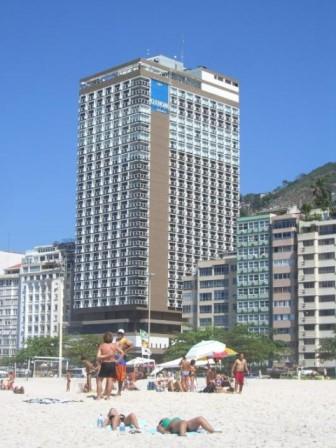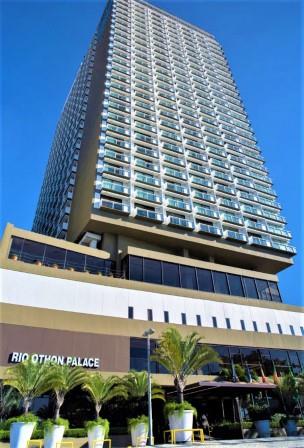ORALS
SESSION: ManufacturingTuePM3-R4
Defense / Safety | Mamalis International Symposium on Advanced Manufacturing of Advanced Materials and Structures with Sustainable Industrial Applications |
| Tue Nov, 6 2018 / Room: Sao Conrado (50/2nd) | |
| Session Chairs: Kazuyuki Hokamoto; Session Monitor: TBA |
17:40: [ManufacturingTuePM313]
Modern Protective Systems for Mitigating Explosions Nikoloz
Chikhradze1 ; Edgar
Mataradze
2 ; Theodore
Krauthammer
3 ; Mikheil
Chikhradze
4 ;
1G. Tsulukidze Mining Institute, Tbilisi, Georgia;
2LEPL Grigol Tsulukidze Mining Institute, Tbilisi, Georgia;
3Director, Center for Infrastructure Protection and Physical Security University of Florida, Geinesville, United States;
4Georgian Technical University, Tbilisi, Georgia;
Paper Id: 144
[Abstract] The major disadvantages of the existing automatic systems of blast suppression are: the long length of response; an inadequate discharge of the blast absorbing agent required for reducing overpressure and temperature to an acceptable value; and the lack of reliability of a blast identification device in difficult conditions of underground openings, especially under long-term operation.
Basic design requirements for the protective system are: short response time from the moment of explosion to the system activation; high reliability to rule out false activation and the possibility of failure to detect an explosion; high reduction of shock wave overpressures; capacity to extinguish secondary blasts and ensuing fires— system should remain active for a few minutes; it shall not interfere in the normal functioning of the tunnel and have an ability to adapt to the tunnel shape and size; the system components shall be strong enough to withstand all loads and high shock; low cost of production, installation, and performance monitoring.
Subject to these requirements, a new blast protection system has been developed by the G. Tsulukidze Mining Institute and Center for Infrastructure Protection and Physical Security (CIPPS) within the frames of the NATO SPS programme, Shota Rustaveli National Science Foundation (SRNSF) and International Science and Technology Center (ISTC) [1, 2, 3].
The system consists of the following three sub-systems: i) a shock wave high-speed suppression section, in which high pressure is generated upon the initiation of the pyrotechnic gas generator; ii) a suppression section with a long-term action, in which high pressure is obtained by using a pump; iii) a system activating device. The system contains a wireless device for the detection of explosions. This paper presents the results of the testing of the Automatic Protecting System from explosion in an underground structure.
References:
[1] E. Mataradze, N. Chikhradze, T. Krauthammer, GE P 2017, 6632 B
[2] Edgar Mataradze, Nikoloz Chikhradze,2, Irakli Akhvlediani, Nika Bochorishvili1 and Ted Krauthammer, http://iopscience.iop.org/article/10.1088/1755-1315/44/5/052012/pdf
[3] N. Chikhradze, E. Mataradze, M. Chikhradze, T. Krauthammer,IAPS, ISIEMS, Sixteenth International Symposium on the Interaction of the Effects of Munition with Structures, Destin, Florida USA, 9-13 November 2015
SESSION: AdvancedMaterialsMonPM1-R6
| 4th Intl. Symp. on New and Advanced Materials and Technologies for Energy, Environment and Sustainable Development |
| Mon Nov, 5 2018 / Room: Guaratiba (60/2nd) | |
| Session Chairs: Janina Molenda; Michael Zharnikov; Session Monitor: TBA |
15:15: [AdvancedMaterialsMonPM108] Invited
Fabrication of Nanocomposites by Mechanical Alloying and Explosive Consolidation Nikoloz
Chikhradze1 ; Guram
Abashidze
1 ;
Fernand
Marquis2 ; Mikheil
Chikhradze
3 ;
1G. Tsulukidze Mining Institute, Tbilisi, Georgia;
2San Diego State University, San Diego, United States;
3Georgian Technical University, Tbilisi, Georgia;
Paper Id: 212
[Abstract] Bulk nanostructure materials are characterized by high specific strength, hardness, corrosion, and wear resistant properties, and in particular, conditions by super-plasticity [1, 2, 3]. They exhibit specific electrical, thermal, magnetic, optical, chemical and other properties. Accordingly, the demand on nanoparticles and bulk nanocomposites in increased for practical application. Therefore, the development of new technologies for fabrication of bulk nanocomposites is big challenge.
This paper consists of an experimental investigation and manufacture of multifunctional bulk nanostructured composite materials in Ti-Al-B-C, Si-B-C, SiC-B-C B<sub>4</sub>C-SiC, B<sub>4</sub>C-Si-C systems.
The coarse crystalline Ti, Al, amorphous Boron and Carbon (Graphite) elementary pure (at least 98%) powders were used as precursors. The blend with different percentage contents of the powders were prepared. The high energetic "Fritsch" Planetary ball mill was used for blend processing, mechanical alloying, amorphization, and nanopowder production. The time of processing varied in range of: 1-36h. The optimal technological regimes for nanopowder preparation are determined experimentally. Ball milled blend compacted by explosive consolidation technology and bulk composite materials are fabricated. For shock wave generation, the industrial explosives and new explosives obtained from decommissioned weapons were used in the experiments. The technological parameters of the explosive consolidation and the structure-properties relationship are presented and discussed in the paper.
References:
[1] The Second World Space Congress, 10-19 October, 2002, Houston, TX, USA., I-4-03IAF, 34th COSPAR Scientific Assembly
[2] R. Mania, M. Dabrowski et all, International Journal of Self-Propagating High-Temperature Synthesis. 2003 v. 12, #3, 159-164
[3] R.M. Da Rocha, Chapter in Ceramic Engineering Science Proceeding, Jan., 2010
15:40 Break



















